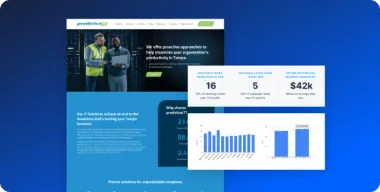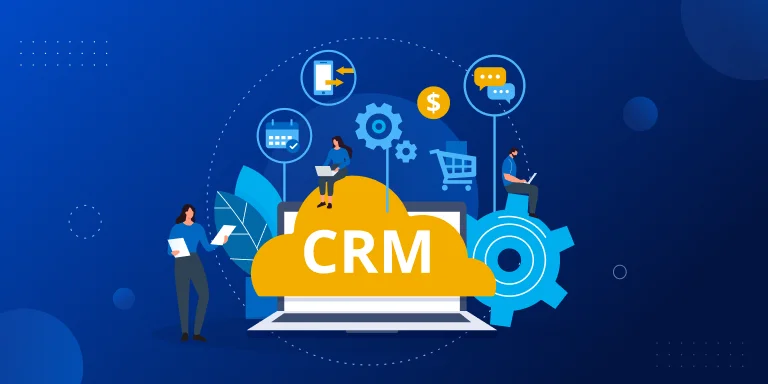Manufacturers are rightly concerned about the viability of social media for their digital marketing strategy. After all, these tools are designed for social interaction and consumer brands, not for engagement between key decision makers in industrial companies. But just because Facebook and Pinterest don’t effective drive results in this industry doesn’t mean social media is a bust.
LinkedIn in particular is an incredibly powerful resource that every industrial company should use liberally to promote their content and increase the size of their network as part of a comprehensive digital marketing strategy.
Why LinkedIn Is Such an Effective Resource
LinkedIn is a fully-features social network, complete with personal profiles, company pages, timeline updates, advertising, and a public blogging platform. But it’s a very different beast from other social networks because it was designed for business use only.
The visual language and interface are the same as what you might find on a site like Facebook, if only because that’s the engagement style people are used to, but the actual content and expectations of people on the site are very different.
Despite a dearth of cat videos and personal essays, LinkedIn has nearly 500 million users, and over 100 million in the US alone. Those users represent every industry on the planet, especially the industrial market where networking has long been the cornerstone of sales success. By focusing your efforts on LinkedIn and the specific, unique benefits it offers, you can tap into that network.
There are three ways to use LinkedIn – each of them offering you an opportunity to engage with and drive traffic from potential prospects
- As a Company
- As an Individual
- As a Thought Leader
Let’s dive deeper into what each of these offers and how you can take advantage of the tools on the site to generate new leads.
LinkedIn as a Company
LinkedIn offers both personal and branded profile options on the site. As a company, you need to have a good Company Page in place. This offers:
- A branded connection for your employees on the site.
- A place for both employees, customers, and contacts to follow you and your updates.
- A place to publish news related to recent activity for your business.
- The opportunity to be found in Google Search or in other sites like SlideShare as a company profile.
Much as your personal LinkedIn profile is a reflection of your resume, your Company LinkedIn Page is a reflection of your company’s online presence.
To create a powerful LinkedIn Company Page, make sure you do the following:
- Add all relevant administrators to the site as managers.
- Update your company information to match the correct category.
- Solicit your staff to update their profiles to link to the company.
- Update the header and logo to match your website branding.
- Schedule posts at least once a week, related to company news, recent stories, or blog posts.
Your company page is the hub of your LinkedIn activity, and it is the channel through which you can run ads if you choose to advertise on LinkedIn. So make sure you optimize it as fully as possible before you start driving traffic.
LinkedIn as an Individual
Over 65% of the US labor force has a LinkedIn account. You most likely have had a personal account on the site for some time, created as either an extension of your resume or at the behest of an invite several years ago. But a personal LinkedIn Profile can go well beyond just another social account to update whenever you change jobs or get a title bump.
Your personal profile is an opportunity to directly engage with potential prospects in a number of ways, both passively and actively. Some of these methods include:
- Posting to your personal feed with recent company updates.
- Engaging in industry groups and sharing recent content published by your company.
- Directly engaging with prospects via InMail.
To be sure, you need a highly optimized profile to start. LinkedIn offers a detailed on-screen guide to help you do this, scoring your account to help determine if you have included everything that is needed. It’s recommended you pay close attention to this as it can make your profile that much easier to find.
Beyond profile updates, though, spend some time mining for relevant groups on LinkedIn. These groups are most often private and have to be applied for based on industry or job role. And the vast majority of them have rules against openly promoting your company. That’s why a strong content-focused approach is so effective.
By sharing relevant blog posts, eBooks, whitepapers, and other useful, educational content in LinkedIn Groups, you can build your trust-rating with the people in that group, and occasionally include a link to content on your company’s website. If that page collects leads, you can expect a good number of leads to result from that careful link placement.
At the same time, LinkedIn has a robust suite of sales tools including Sales Navigator and InMail. These allow you to search for and tag leads based on certain criteria, and then followup with them directly. When properly researched, and effectively engaged via group or other channel, this allows you to get started with a new prospect much more easily.
LinkedIn as a Thought Leader
Finally, you can use LinkedIn as a thought leader. Specifically, you can take advantage of the Pulse platform to publish content on LinkedIn. Essentially a public blogging platform, Pulse allows you to share content that is then pushed to your connections first, and then to others who may know those people’s contacts if they like or engage with the content.
While the immediate audience for your Pulse posts may start small, routine posting and engagement with larger groups of potential prospects will allow you to grow your audience.
The Power of LinkedIn for Industrial Companies
As an industrial company, LinkedIn is one of the most useful resources currently available for your efforts. It offers ways to engage as a company, individual or thought leader with prospects in the companies you want to do business with. By creating a strong set of profiles and mining LinkedIn’s groups and Pulse blogging platform for potential connections, you can build an audience and generate new leads over time in ways that other social media won’t support for manufacturers and industrial companies.






